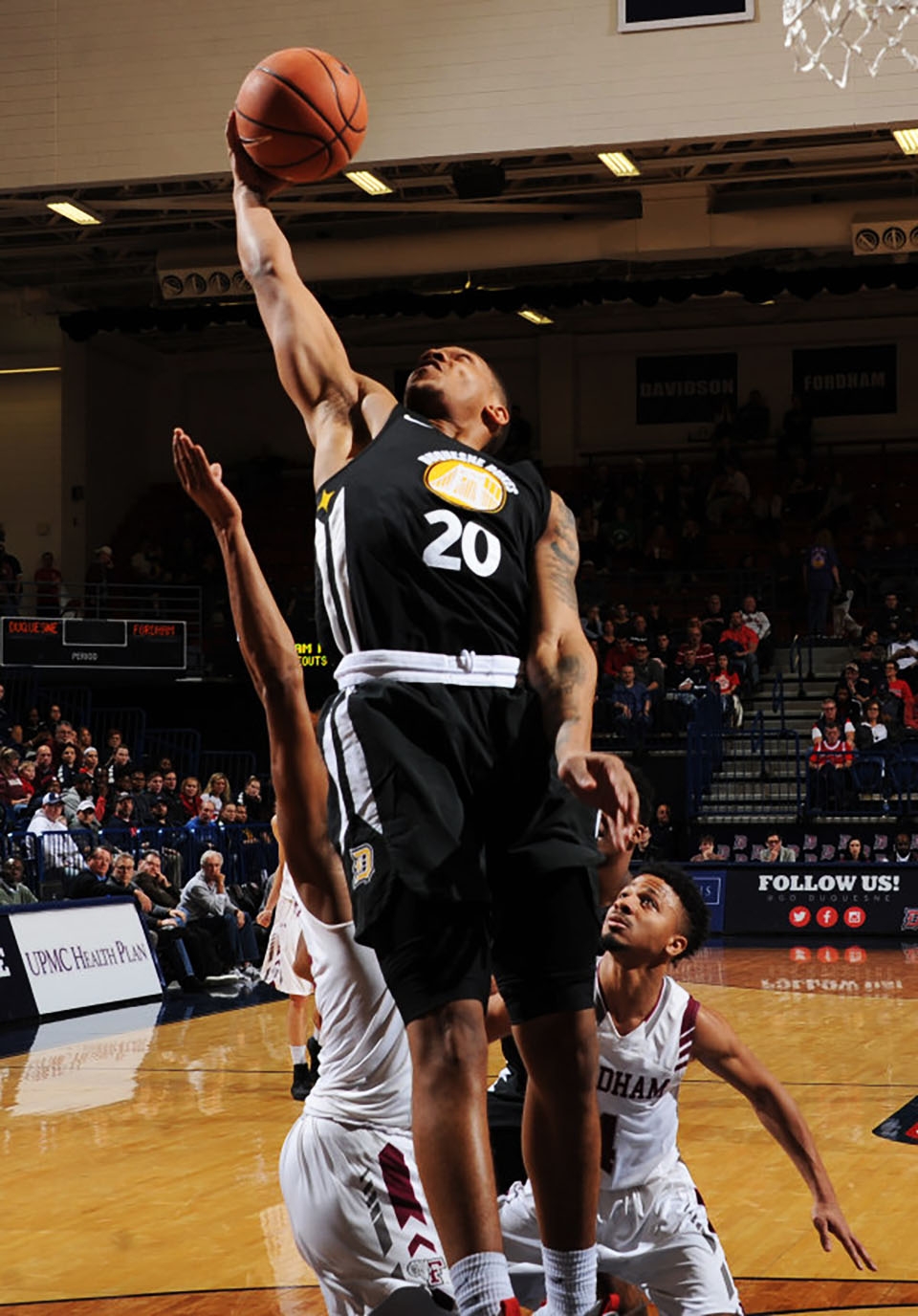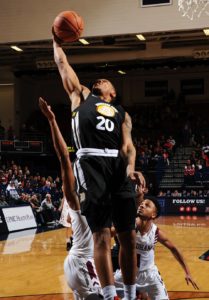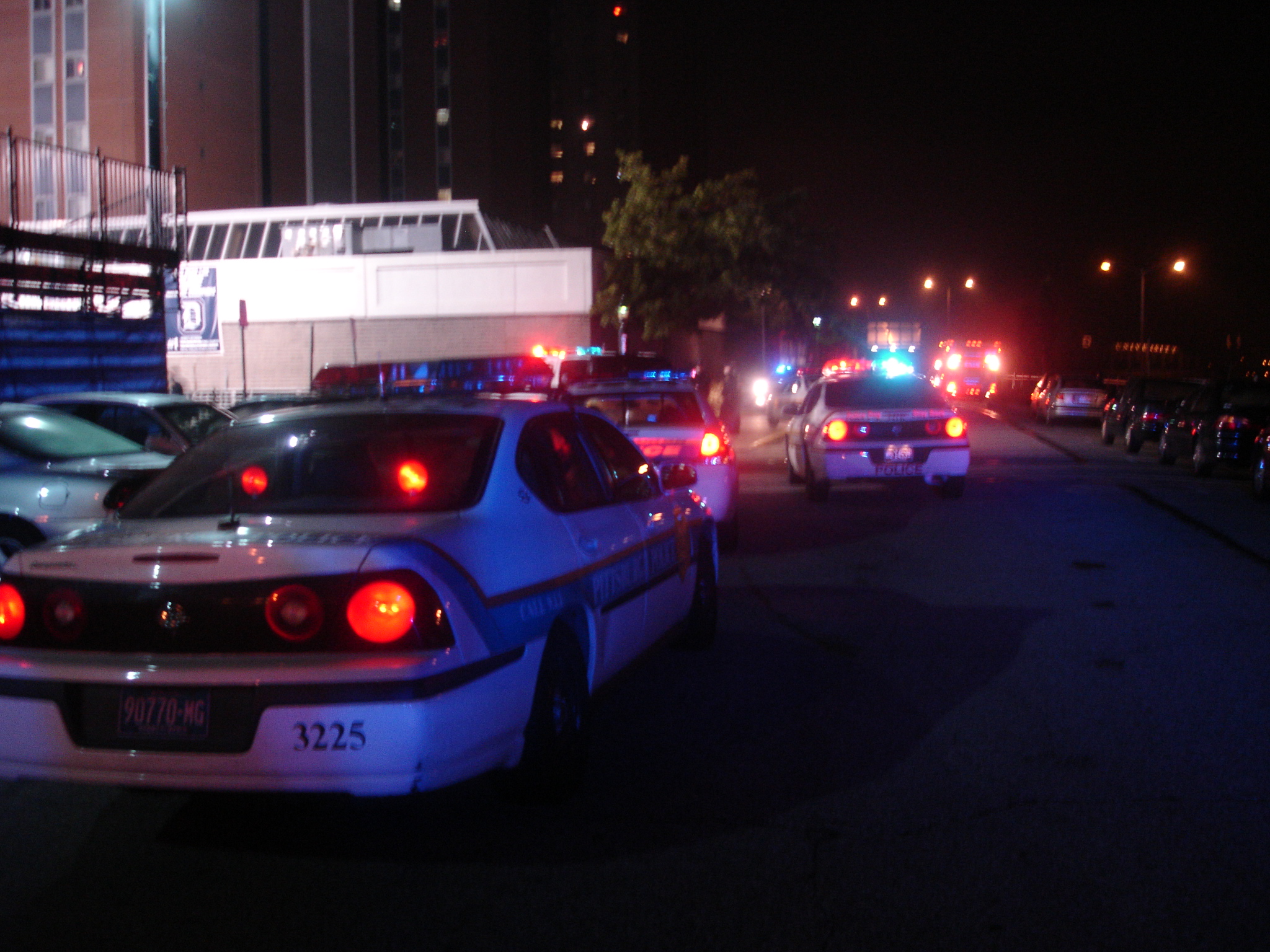

Jacob Hebda | Staff Writer
02/15/2018
After a rough 1-4 stretch in its previous five games, Duquesne had a seemingly strong opportunity to get back on track on Feb. 10 against Fordham, one of this year’s definitive cellar dwellers in the Atlantic 10.
Until playing the Dukes, the Rams had lost seven of their last 10 games in 2018 by double-digits. They had also been winless away from home, going 0-8.
However, prior to the game, head coach Keith Dambrot warned that Fordham could very well pull off the upset.
“We have to be emotionally engaged, or they’ll beat us,” Dambrot told reporters. “They’re good enough at what they do to give us a hard time if we’re not ready to go.”
To the shock of many, that is exactly what happened, as Fordham took down the Dukes.
In fact, the Rams did not just beat Duquesne — they practically ran them out of the building, winning 80-57.
Fordham came out of the gates firing on all cylinders, shooting a robust 58.8 percent from the field in the first half. The Dukes, meanwhile, shot just over 30 percent.
Despite trailing by nine at the half, it seemed possible that Duquesne could still pull out a victory, given the resilience of this year’s Dukes team.
Prior to the game, the Rams averaged 62.1 points per game, ranking them 345 of 351 Division I teams in the nation. They also averaged just a 40.8 shooting percentage, placing them 318th in the nation.
Despite those figures, Fordham stayed hot and took the air out of Palumbo Center just moments into the second half. Freshman swingman Ivan Raut, who led both teams with 25 points, hit two 3-pointers before a minute had even elapsed in the half. Just like that, the “Raut” was on.
Uncharacteristically, the Dukes were a sieve on defense, repeatedly giving up open 3-pointers and good looks from the paint. The Rams took advantage, finishing the day with a season-high field goal percentage of 59.5.
Duquesne, on the other hand, finished with a season-low 31.7 shooting percentage. The only Duke who could get anything going was sophomore Kellon Taylor, who scored 13 points and went a perfect 5-of-5 from the field.
Much of the poor shooting was due to the inability of a typically prolific backcourt to get going. Star guards Mike Lewis II, Rene Castro-Caneddy and Tarin Smith combined for a measly 25 points on 8-of-28 shooting from the field.
Dambrot attributed at least part of the backcourt’s poor performance to the defensive game plan of Fordham.
Fordham defended using a scheme Dambrot referred to as “three-man total denial.” As Dambrot further explained, that means “three guys playing man-to-man and two guys playing zone.” Essentially, it is meant to neutralize dynamic perimeter players.
For a team driven by its guards, this strategy can be quite problematic. The Dukes, who rely heavily on the play of their backcourt for scoring their points, experienced this issue firsthand against the Rams.
As Dambrot said, Fordham took “our strengths away.”
Even with that, it is still hard to understand how Duquesne fell by 23 against a team it defeated by the same margin back in January. Fordham nearly doubled its point total from that game, which it lost 64-41 on Jan. 6.
After a loss as bad as this one, it is easy to be discouraged. Duquesne fans are all too familiar with the program’s generally miserable performance in recent years. A blowout loss at home to the worst team in the league does not do much to assuage any concerns of a late-season collapse.
However, attendance for the noon showdown was 2,871, the second-most at Palumbo this season. After a record turnout against St. Bonaventure, this crowd was further proof that Duquesne fans are excited about the program again.
Hopefully, the poor outing against Fordham does not discourage fans. While the team has struggled lately, losing five of its last six games, it should be remembered that Duquesne is ahead of where most expected it to be at this point.
“I knew we were going to have potholes in the road,” Dambrot said. “I feel bad for [the players] because they’ve had a great year.”
The Dukes have had their fair share of difficulties, but their improvement from last season is nevertheless impressive.
As it has been frequently pointed out, the Dukes were picked to finish last in the 14-team A-10 Preseason Coaches’ Poll. Yet, here they are at 15-11 overall, up from last year’s 10-22 campaign, with five regular-season games remaining.
“I gotta build the foundation for making this a championship-level team,” Dambrot said following the loss. “Which, obviously, we’re not a championship-level team yet.”
Dambrot is right. Programs do not turnaround overnight. Coaches need time to recruit their own players and integrate their new system into a program.
So, in the meantime, Duquesne fans should follow Dambrot’s advice to “take the good with the bad in life.”
It may be frustrating to watch the Dukes struggle to find their way, but based on what we have seen from Dambrot and his team, there is still plenty of reason to be excited for Duquesne’s future in the landscape of college basketball.
Duquesne will return to action on Saturday, Feb. 17, at 6 p.m. at Saint Joseph’s (10-14, 5-7 A-10).




